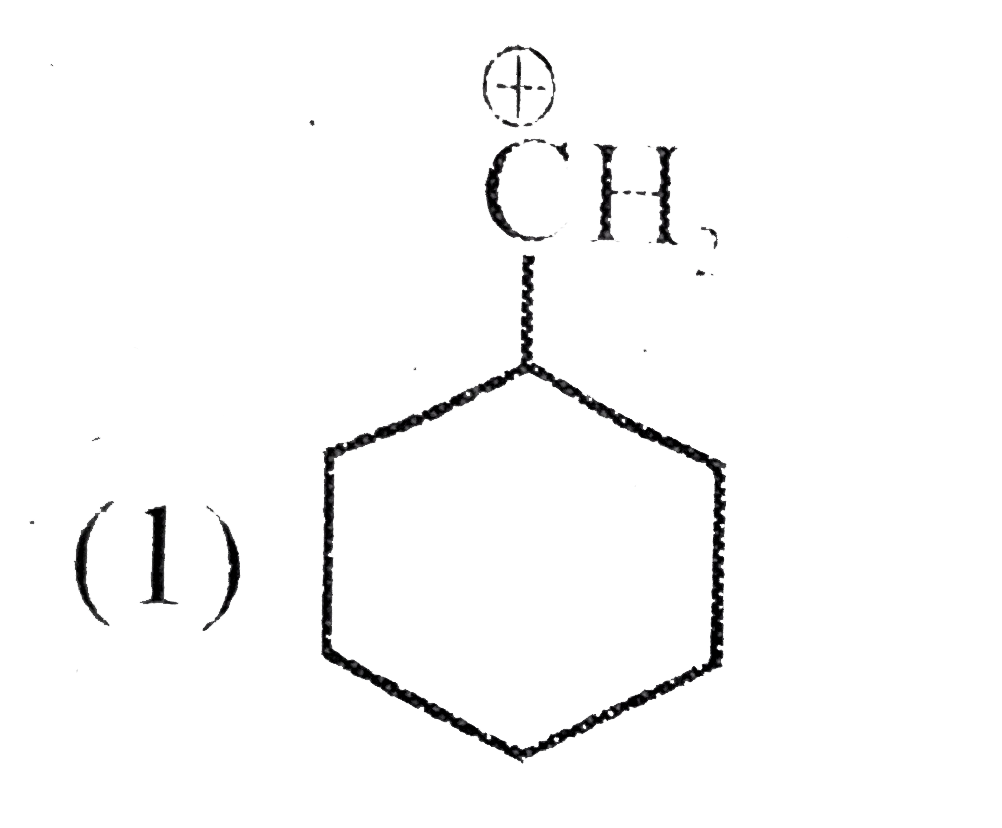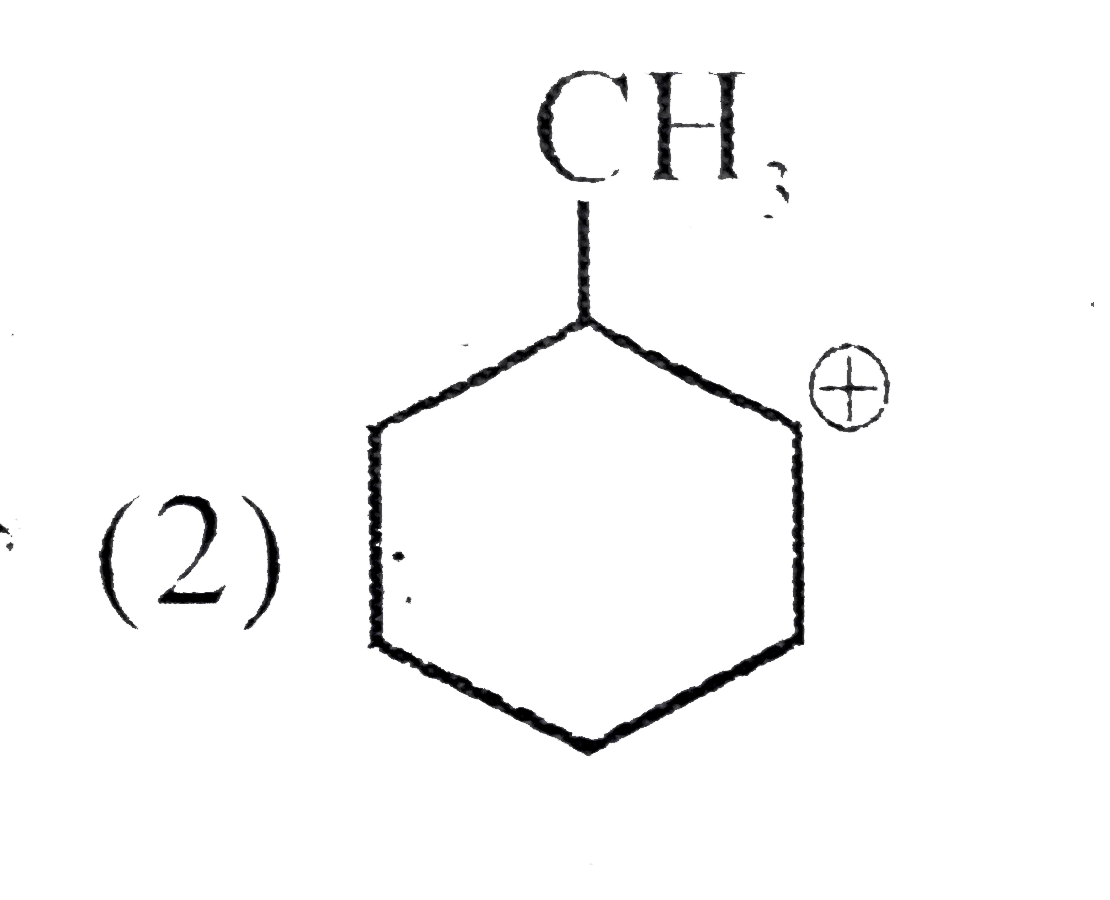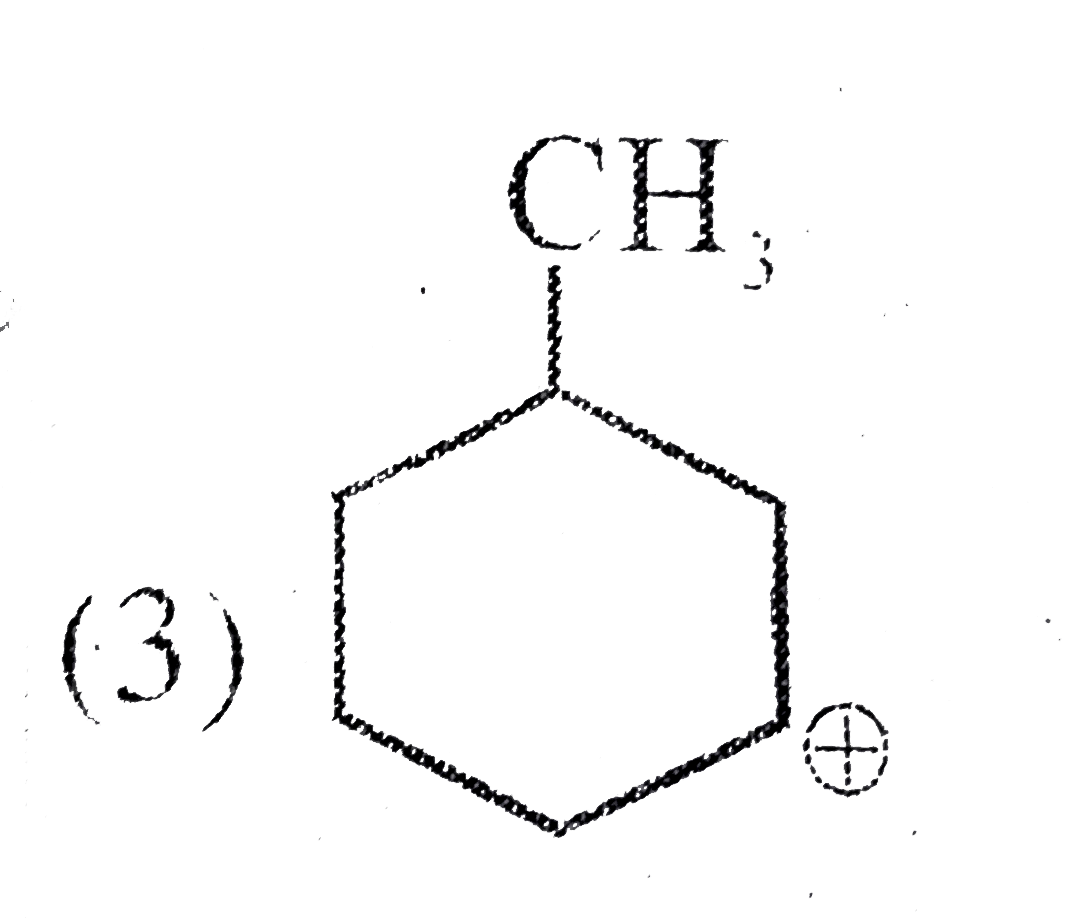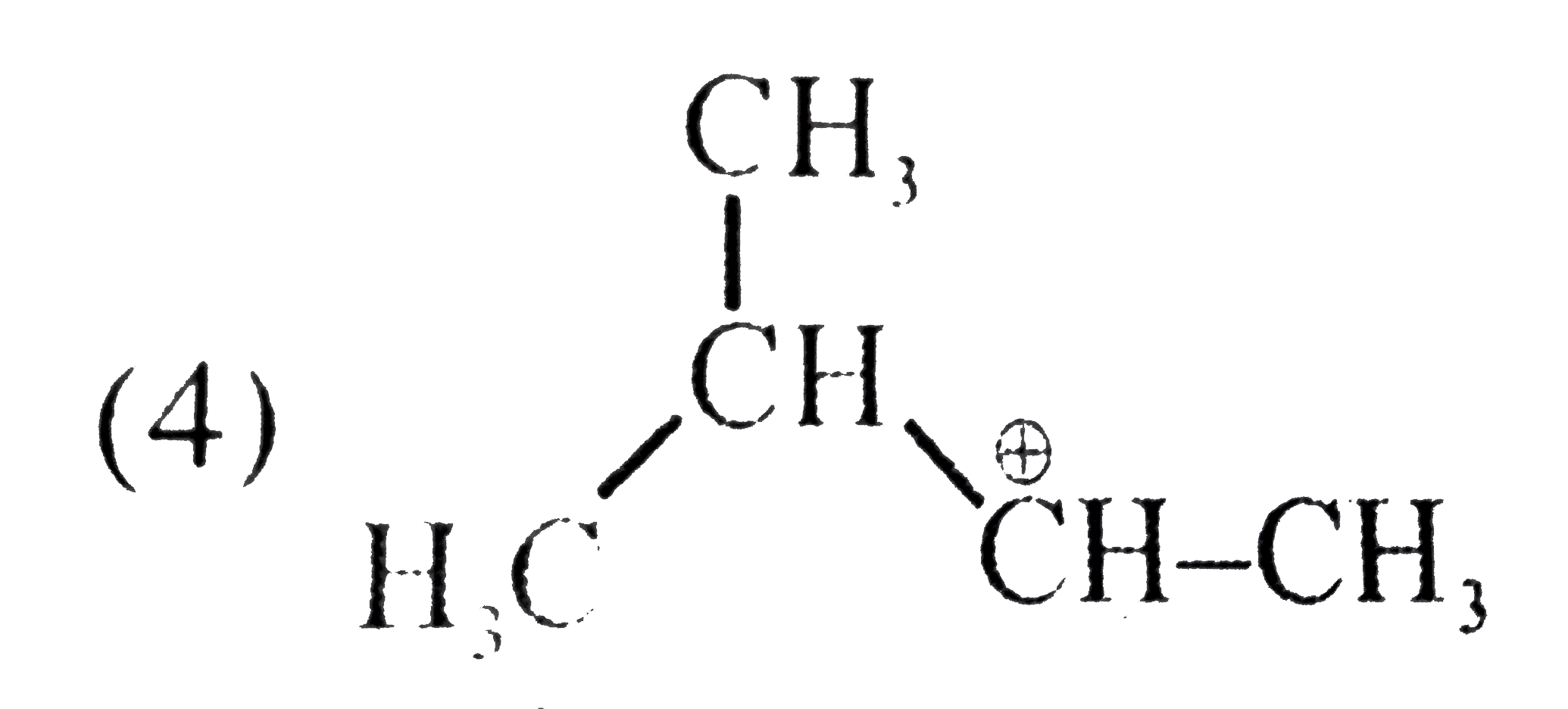Corbocation rerragnement is not possiable in : -




To solve the question regarding which carbocation rearrangement is not possible, we will analyze the stability of different carbocations and their potential for rearrangement.
1. Understanding Carbocation Stability:
- Carbocations are positively charged carbon species. The stability of a carbocation increases with the number of alkyl groups attached to the positively charged carbon. More alkyl groups provide hyperconjugation and inductive effects that stabilize the positive charge.
2. Identifying the Options:
- Let's denote the options as follows:
- Option 1: Carbocation with a positive charge on a carbon that can form a seven-membered ring.
- Option 2: Carbocation with a positive charge on a carbon that can undergo a hydride shift to increase stability.
- Option 3: Carbocation that has fewer alpha hydrogens available for rearrangement.
- Option 4: Carbocation that can undergo a rearrangement to a more stable structure.
3. Analyzing Each Option:
- Option 1: The carbocation can rearrange to form a seven-membered ring, which is a stable structure. Rearrangement is possible.
- Option 2: The carbocation can undergo a hydride shift, increasing the number of alpha hydrogens from 3 to 7, making it more stable. Rearrangement is possible.
- Option 3: The carbocation has four alpha hydrogens. If a hydride shift occurs, it will either remain with four or reduce to three alpha hydrogens, which does not stabilize the carbocation. Thus, rearrangement is not favorable.
- Option 4: The carbocation can rearrange to a structure with more alpha hydrogens (from 4 to 8), making it more stable. Rearrangement is possible.
4. Conclusion:
- The option where carbocation rearrangement is not possible is Option 3, as it does not lead to a more stable structure.
Final Answer:
Carbocation rearrangement is not possible in Option 3.
- Carbocations are positively charged carbon species. The stability of a carbocation increases with the number of alkyl groups attached to the positively charged carbon. More alkyl groups provide hyperconjugation and inductive effects that stabilize the positive charge.
- Let's denote the options as follows:
- Option 1: Carbocation with a positive charge on a carbon that can form a seven-membered ring.
- Option 2: Carbocation with a positive charge on a carbon that can undergo a hydride shift to increase stability.
- Option 3: Carbocation that has fewer alpha hydrogens available for rearrangement.
- Option 4: Carbocation that can undergo a rearrangement to a more stable structure.
- Option 1: The carbocation can rearrange to form a seven-membered ring, which is a stable structure. Rearrangement is possible.
- Option 2: The carbocation can undergo a hydride shift, increasing the number of alpha hydrogens from 3 to 7, making it more stable. Rearrangement is possible.
- Option 3: The carbocation has four alpha hydrogens. If a hydride shift occurs, it will either remain with four or reduce to three alpha hydrogens, which does not stabilize the carbocation. Thus, rearrangement is not favorable.
- Option 4: The carbocation can rearrange to a structure with more alpha hydrogens (from 4 to 8), making it more stable. Rearrangement is possible.
- The option where carbocation rearrangement is not possible is Option 3, as it does not lead to a more stable structure.
Carbocation rearrangement is not possible in Option 3.

